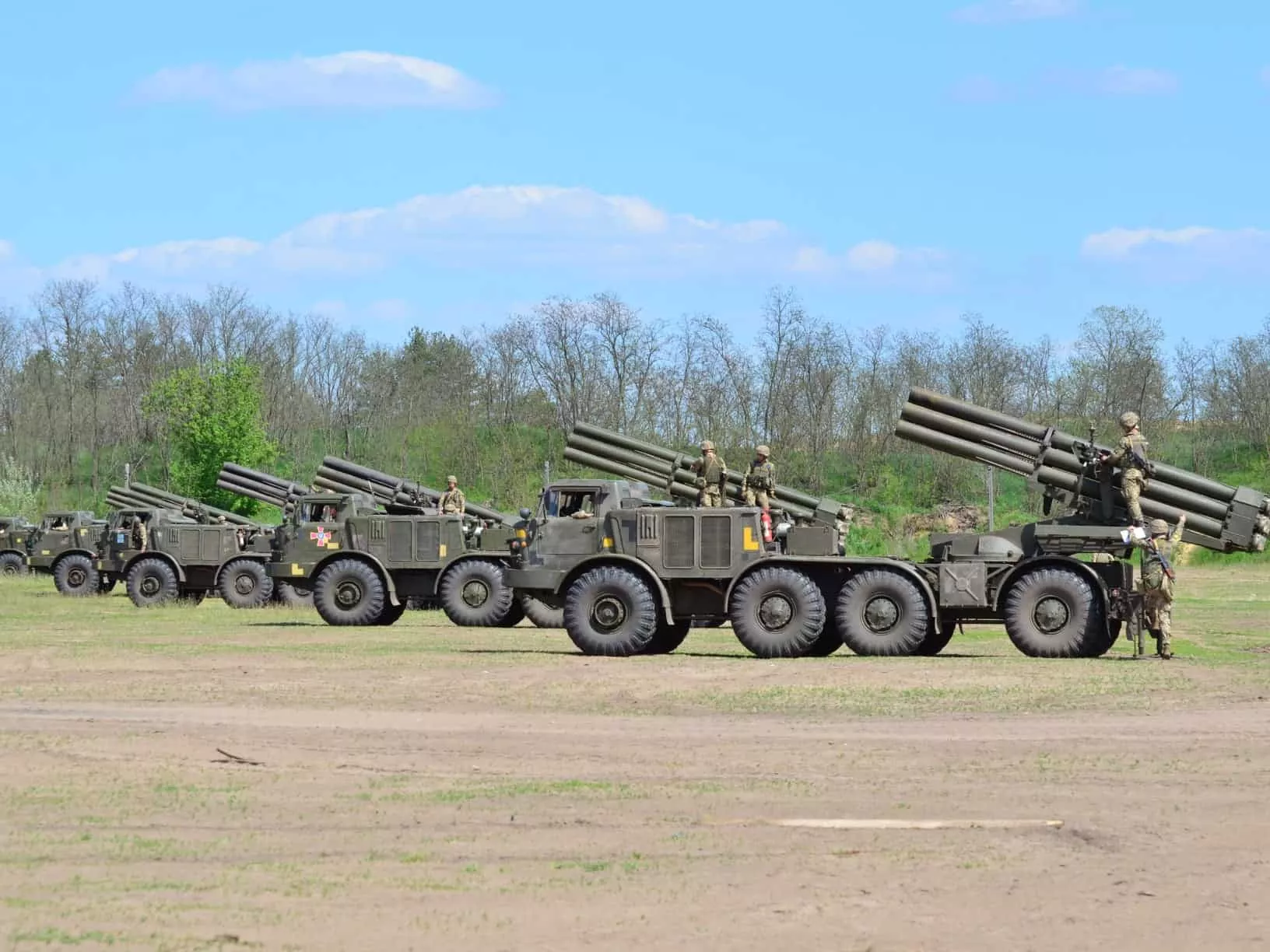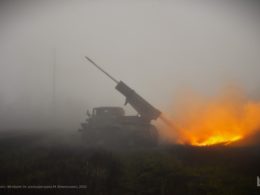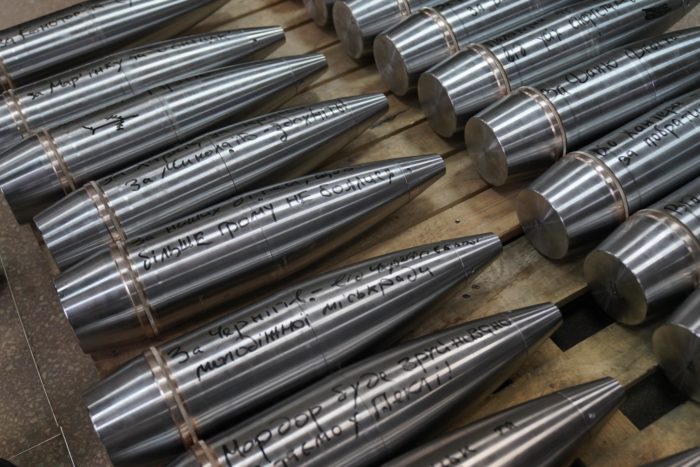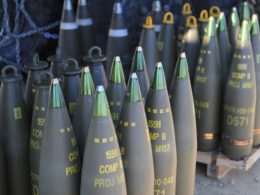Western artillery shipments to Ukraine is what it needs to turn the tide of the war. Especially crucial are rocket artillery -- MRLS and HIMARS -- believed to be the final element in arming Ukraine needed for the counteroffensive aimed to win the war.
Artillery is Ukraine's invisible but crucial weapon of war
In historical films about World War II, artillery was usually depicted as guns sitting simply on the frontline, while their crews fire directly on advancing enemy tanks. Today's reality is different. A howitzer, which is a powerful gun firing shells at targets dozens of kilometers away by a high arc (so-called "plunging fire"), is the backbone of artillery in modern armies.
Javelins are good, but it is artillery strikes that coined Ukraine’s military success
Unlike the US Army, Ukrainians lack attack aircraft, gunships, and cruise missiles, so Ukraine relies on howitzers and rocket artillery to destroy enemy armored vehicles, artillery batteries, military bases, and other important targets from a long distance.

Russian troops suffer epic fail while attempting to cross river at BilohorivkaObviously, artillery doesn't act independently, it's the Ukrainian infantry and tanks who hold the frontline, repel enemy attacks, and liberate settlements. However, according to military expert Mykola Bielieskov, 60-70% of losses have been inflicted by artillery. In addition to howitzers, Ukrainians also use the so-called multiple rocket launchers such as BM-21 Grad, which can fire 40 rockets in one volley.

Artillery gets even more important in the battle for the East, where Russia has an advantage
From early May, Russian troops have been advancing from several directions, trying to surround Ukrainian units in eastern Ukraine. After their defeat in the Battle of Kyiv, Russian invaders changed their strategy, abandoning the blitzkrieg plans in favor of a grinding offensive engaging large forces, which eventually turned into a battle of attrition. No wonder Ukrainians are even more counting on their guns and launchers to repel their massive attacks.
"It's the work of several [Russian] guns, sometimes batteries or MLRS. It can take hours. Deadly iron just falls from the sky. After that an attack with tank or IFV support begins immediately. It's very difficult to explain in words. Goes beyond the realities we understand," Ukrainian civil volunteer Roman Donik describes the situation.

"90% of our losses are caused by artillery fire. In general, the majority of soldiers have not seen the enemy with their own eyes for months despite intense fighting,” commented Ihor Lutsenko, military serviceman and former MP.Outgunned by Russians, the Ukrainian army also risks facing a shortage of shells, as ammunition supplies get quickly depleted during the battles. The country doesn't produce them, relying on Soviet-times stockpiles. Since NATO countries use 155mm artillery shell caliber instead of Soviet standard 152mm, obtaining ammunition from the USA or other allies is a difficult task.
Nevertheless, Ukraine's allies are already delivering modern guns
Artillery supplies from Western allies kicked off in April. The United States, Canada, and Australia deliver a total of 100+ modern M777 howitzers to Ukraine. These guns are capable of firing 5 shells per minute at a distance of 24-30 kilometers. More guns mean equalizing the chances and suppressing enemy artillery. Also, experts believe that the M777s are also better in terms of quality than the Soviet pieces. In addition, these supplies solve the ammunition issue. Nevertheless, Ukraine needs more weapons."First of all, the western artillery is new. It's better than the old Soviet one [Ukraine generally uses USSR-made guns, which are at least 30 years old - Author]... It has a longer range, it hits more accurately, it has more shells, and those are better. You can get them from different countries as aid or buy,” commented Taras Chmut, Chair of the Board of the Ukrainian Military Center.The first units of the Western artillery are already on the battlefield, starting to have an effect on the course of the war. And they have already shown another advantage -- greater accuracy as compared to Soviet weapons. Journalist Yurii Butusov described M777s as "very accurate, able to hit Russian batteries with the first salvos.”

"I had an opportunity to see how our guys are working on NATO's 155mm's. Awesome. The usual 'laying it in the 30-meter circle counts as a hit' has changed to 'we aimed but hit one meter left, oh dear, oh no, let's do it more precisely!"Using the M777 guns, the Ukrainians have already destroyed an ammunition depot and 8 armored vehicles near the key city of Izium. In a similar way, the Ukrainian forces destroyed a Russian 2C3 Akatsiya self-propelled howitzer. The American gun has a longer firing range, so the Russians had no chance to return fire. There are clearly more hits, unspoken due to operational secrecy.


Now Ukraine seeks rocket artillery to launch a counteroffensive
"The issue of providing Ukraine with multiple rocket launch systems such as M142 HIMARS and M270 MLRS is crucial,” wrote Valerii Zaluzhnyi, commander-in-chief of the Armed Forces of Ukraine after a conversation with Mark Milley, US Chairman of the Joint Chief of Staffs.Dmytro Kuleba, the country's Minister of Foreign Affairs echoed the request, calling these systems vital for defending the Donbas. The "reactive artillery" (the Soviet-times term for rocket artillery, - Ed.) is believed to be the final element in arming Ukraine needed for the general counteroffensive aimed to win the war. This delivery isn't unrealistic, as the US Army has over 1,000 MLRS and 410 HIMARS vehicles. Their donation won't dramatically weaken American military strength. Ukrainians are counting on these weapons because of their firepower.

A protracted war effectively means that the Ukrainian army would not quickly liberate the occupied regions and Russian atrocities in Melitopol or Kherson will continue.
However, the provision of HIMARS and MLRS suddenly became a political issue. There's an opinion among the Western experts that Ukrainians will use these systems to hit military bases in Russia, further escalating the war.US preparing to send Ukraine long-range advanced missile systems, known as MLRS and HIMARS, which are now the main request of Ukrainian officials
— Euromaidan Press (@EuromaidanPress) May 27, 2022
Approval may be announced next week.https://t.co/lCFmINTHVy pic.twitter.com/8F0bM2CYp9

 Yuriy Prymachuk is a freelance journalist and editor from Ukraine. He received a master's degree in Institute of Journalism, Kyiv, interned in Radio Free Europe/Radio Liberty, worked as journalist and editor in political and economic fields.
Yuriy Prymachuk is a freelance journalist and editor from Ukraine. He received a master's degree in Institute of Journalism, Kyiv, interned in Radio Free Europe/Radio Liberty, worked as journalist and editor in political and economic fields.
Read more:
- Russian troops suffer epic fail while attempting to cross river at Bilohorivka
- Missiles and escorts: Unblocking Ukraine’s ports on the Black Sea
- West must avert long-term war in Ukraine – US Gen. Wesley Clark
- Russia losing Ukraine war, equipment losses show
- 12 reasons why the West should arm Ukraine, now!
- Breakthrough at Ramstein: NATO unites to help Ukraine defeat Russia




